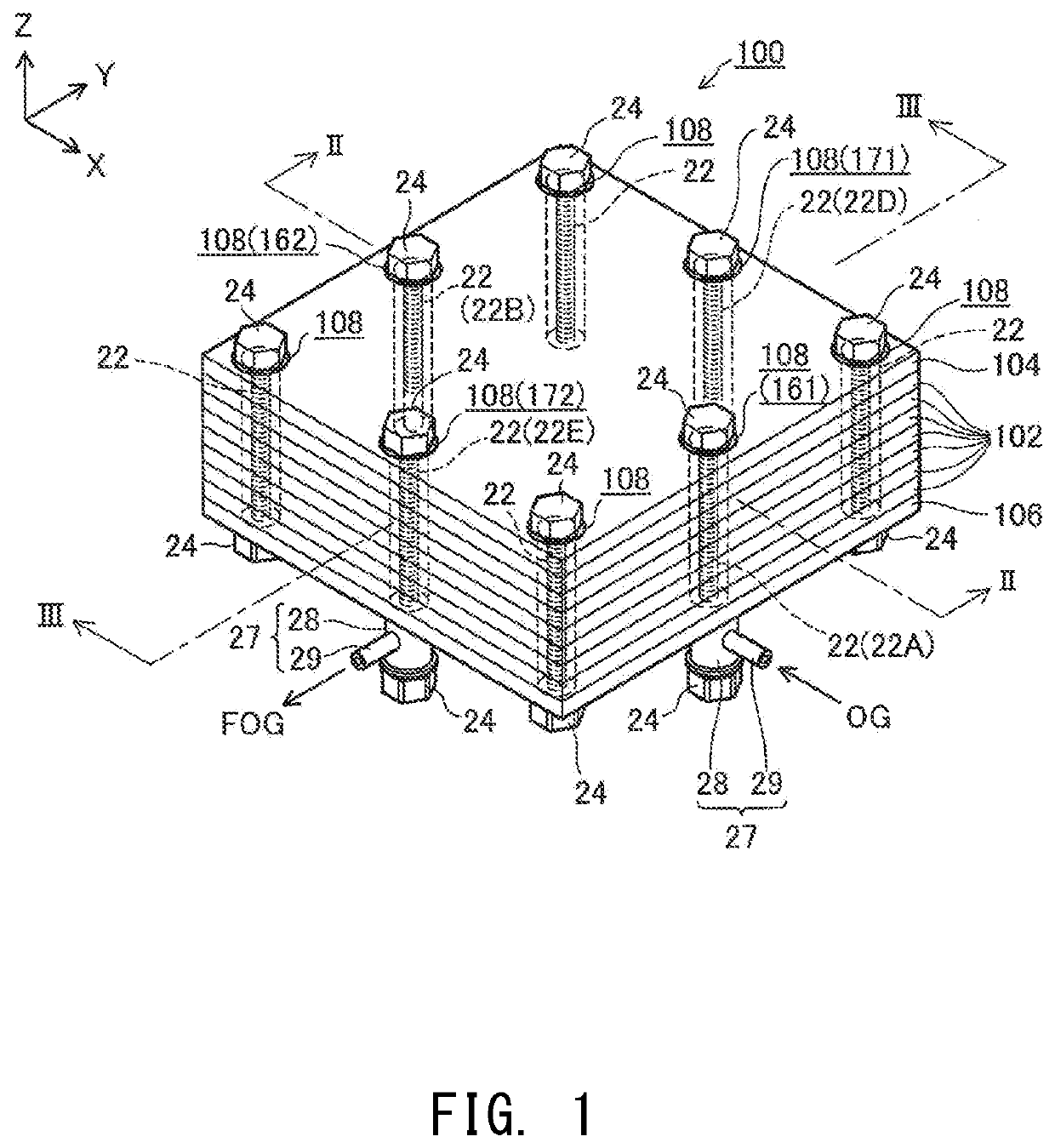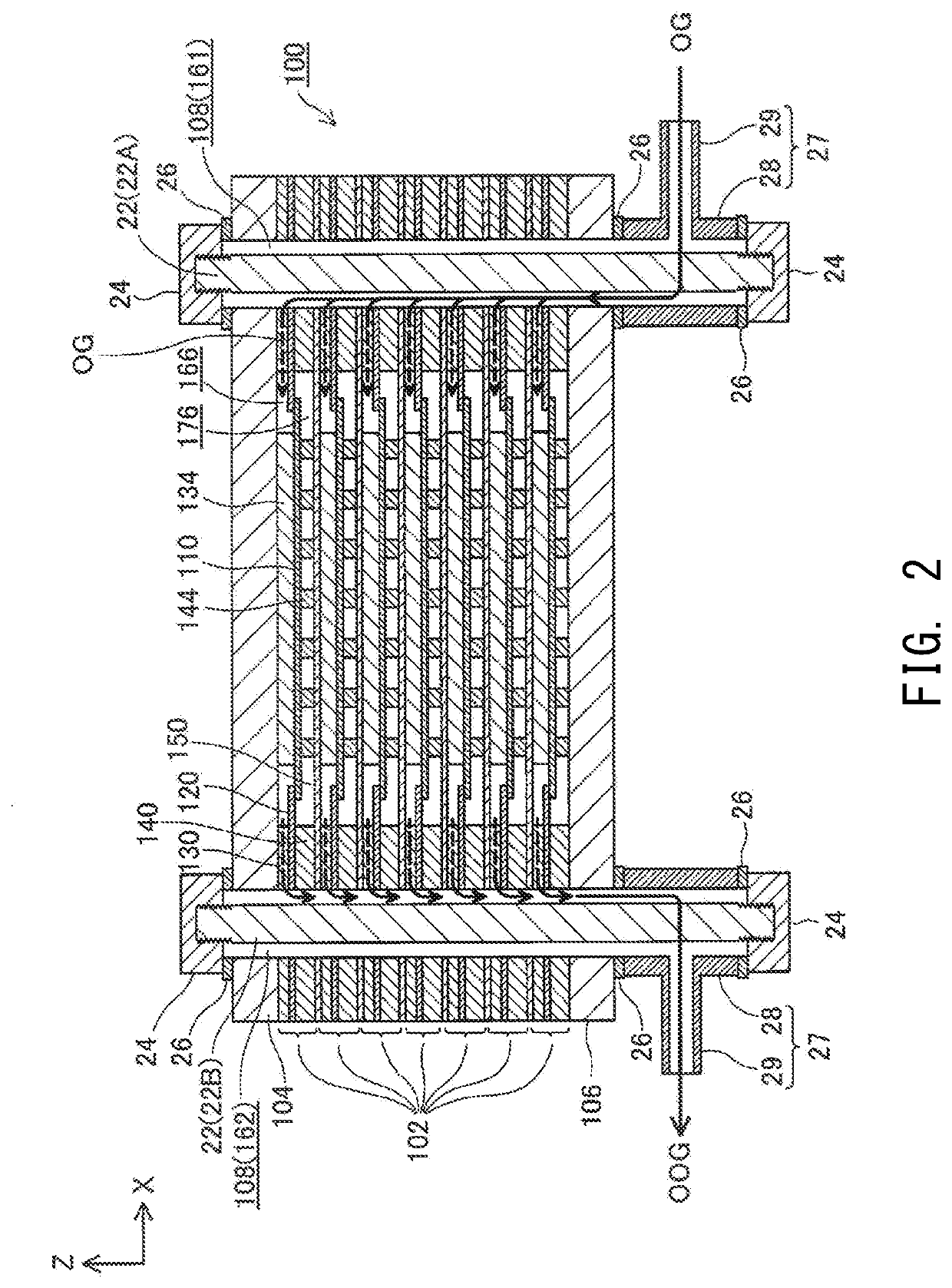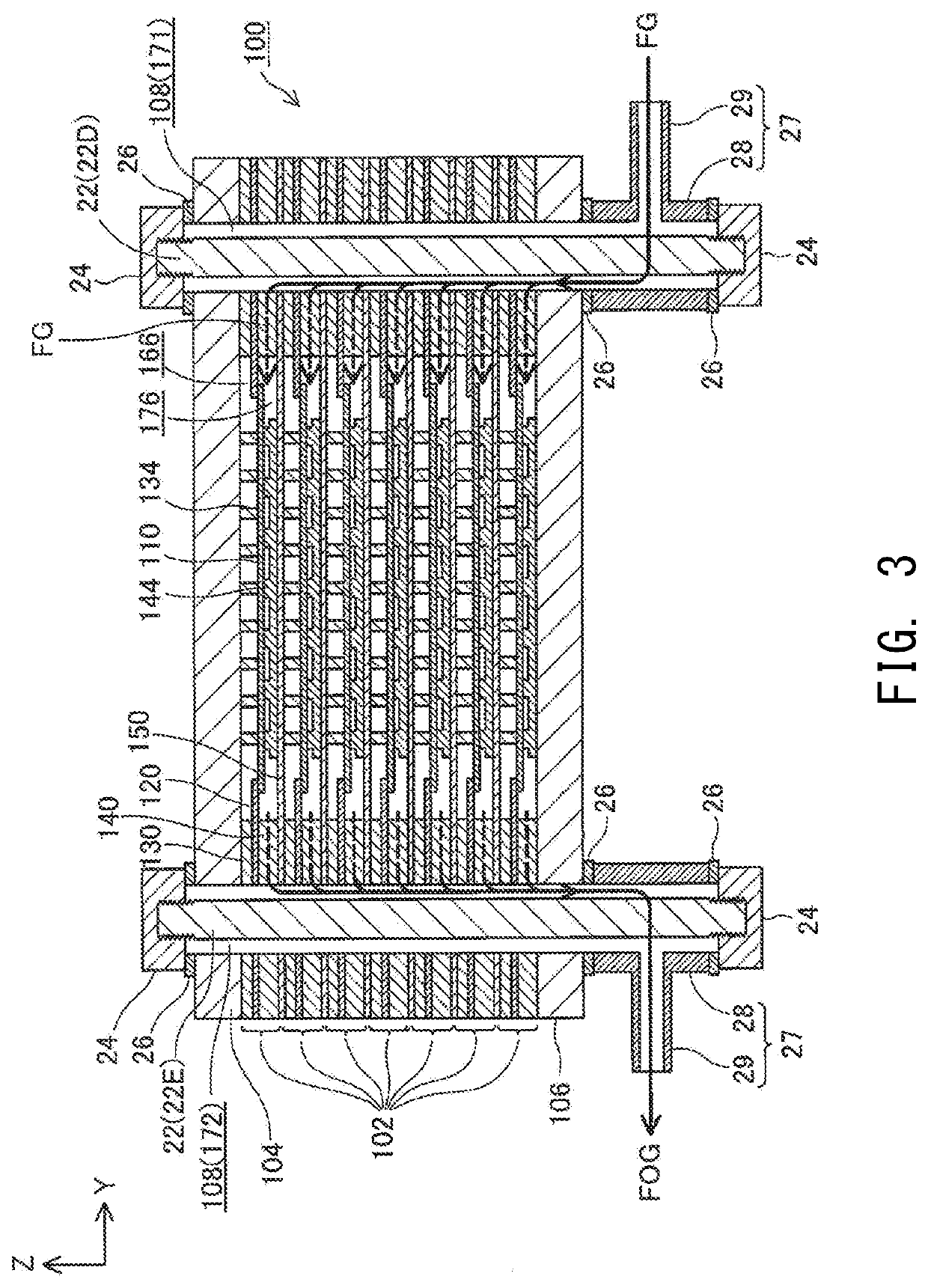Electrochemical reaction single cell and electrochemical reaction cell stack
a technology of electrochemical reaction and single cell, which is applied in the direction of cell components, electrochemical generators, electrolysis components, etc., can solve the problems of poor electricity generation performance of single cell, achieve the effect of preventing impairment of the performance and effective reducing the electric resistance of the electrochemical reaction single cell
- Summary
- Abstract
- Description
- Claims
- Application Information
AI Technical Summary
Benefits of technology
Problems solved by technology
Method used
Image
Examples
embodiment
A. Embodiment
A-1. Structure
Structure of Fuel Cell Stack 100
[0037]FIG. 1 is a perspective view showing the external appearance of a fuel cell stack 100 according to the present embodiment; FIG. 2 is an explanatory view showing an XZ section of the fuel cell stack 100 taken along line II-II of FIG. 1; and FIG. 3 is an explanatory view showing a YZ section of the fuel cell stack 100 taken along line of FIG. 1. FIGS. 1 to 3 show mutually orthogonal X-axis, Y-axis, and Z-axis for specifying respective directions. In the present specification, for the sake of convenience, the positive Z-axis direction is called the “upward direction” and the negative Z-axis direction is called the “downward direction”; however, in actuality, the fuel cell stack 100 may be disposed in a different orientation. The same also applies to FIG. 4 and subsequent drawings.
[0038]The fuel cell stack 100 includes a plurality of (seven in the present embodiment) of electricity generation units 102 and a pair of end pl...
PUM
| Property | Measurement | Unit |
|---|---|---|
| interface contact length | aaaaa | aaaaa |
| contact length | aaaaa | aaaaa |
| contact length | aaaaa | aaaaa |
Abstract
Description
Claims
Application Information
 Login to View More
Login to View More - R&D
- Intellectual Property
- Life Sciences
- Materials
- Tech Scout
- Unparalleled Data Quality
- Higher Quality Content
- 60% Fewer Hallucinations
Browse by: Latest US Patents, China's latest patents, Technical Efficacy Thesaurus, Application Domain, Technology Topic, Popular Technical Reports.
© 2025 PatSnap. All rights reserved.Legal|Privacy policy|Modern Slavery Act Transparency Statement|Sitemap|About US| Contact US: help@patsnap.com



